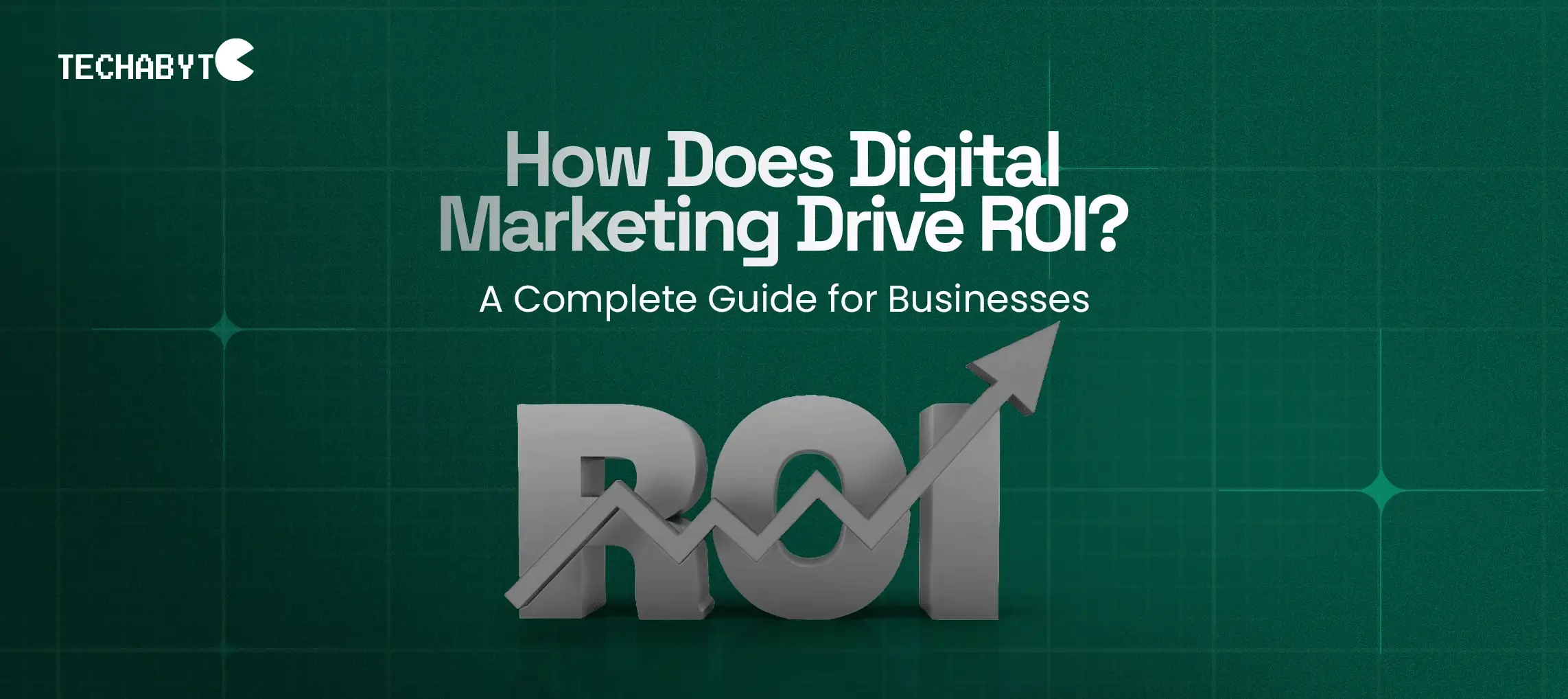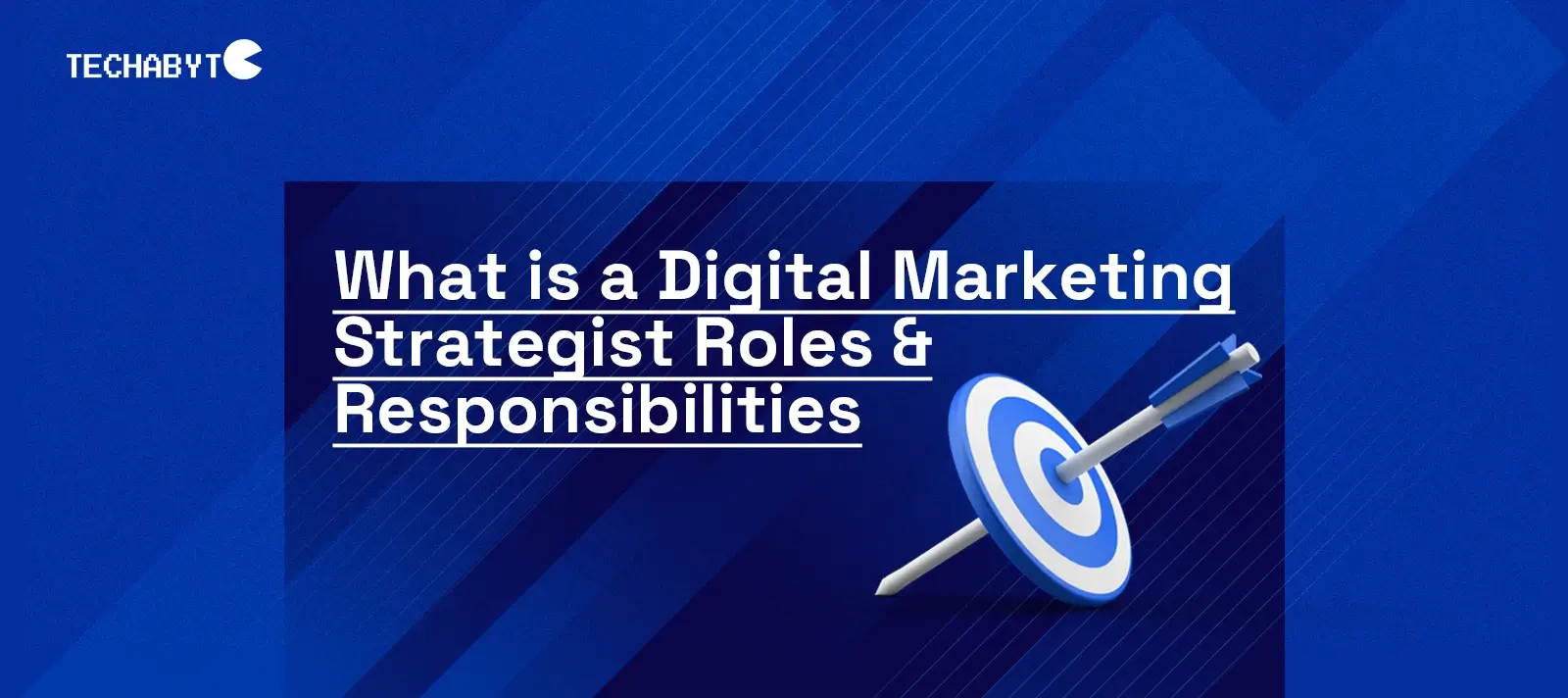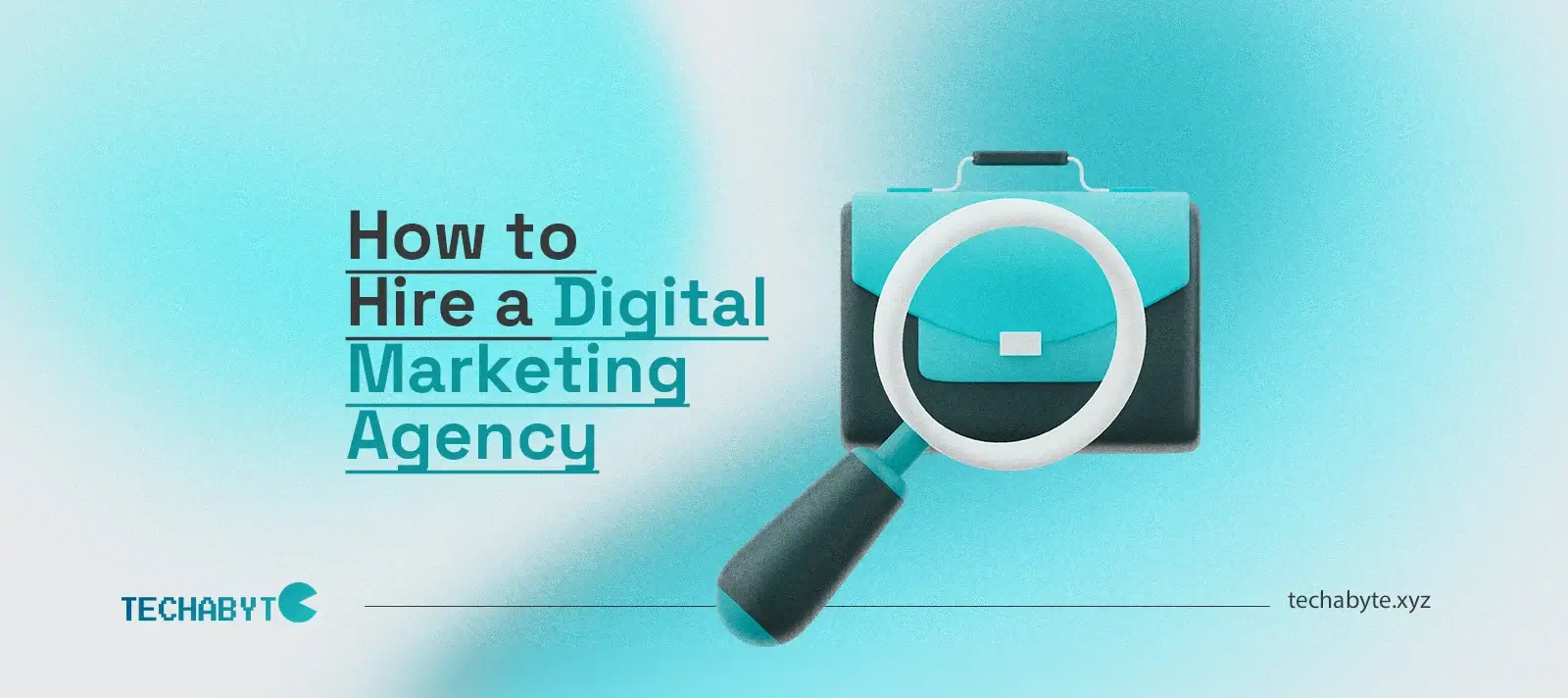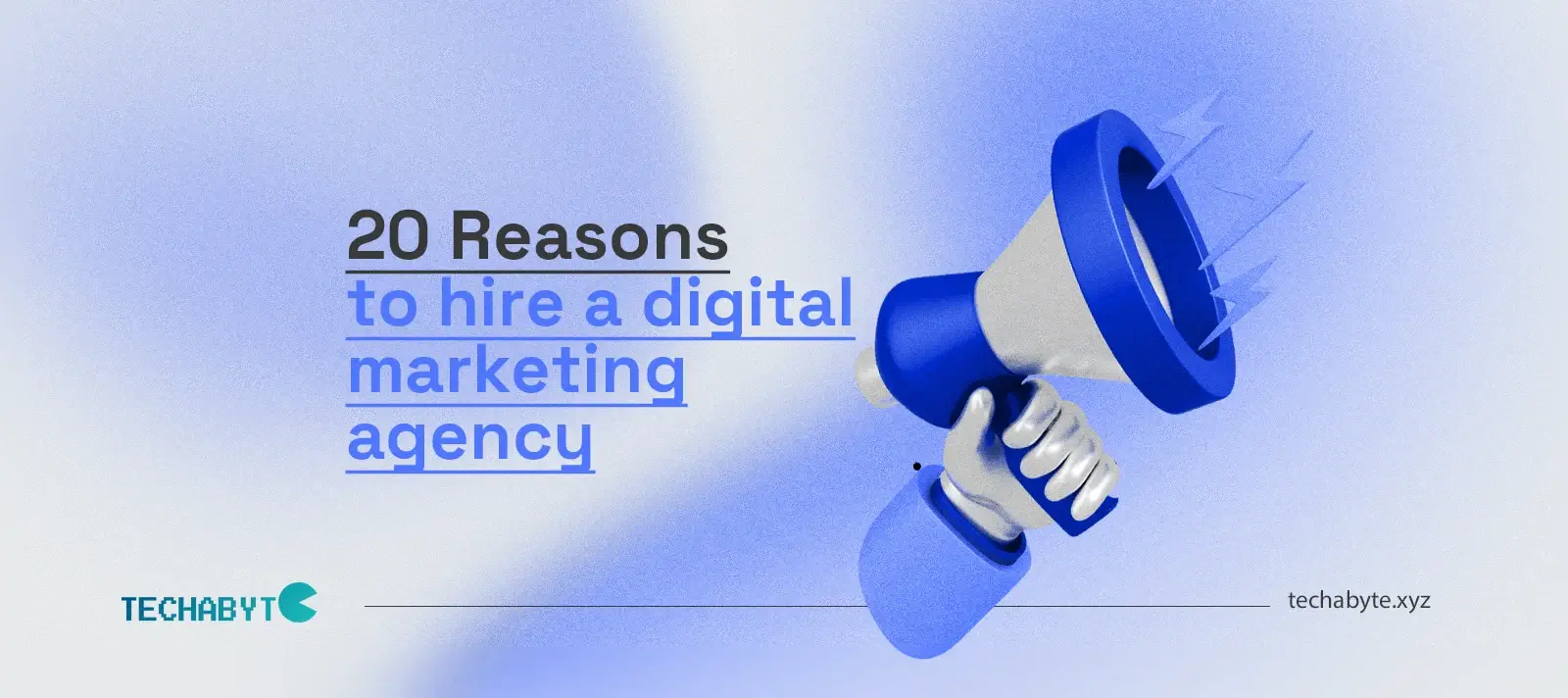Key Takeaways
In today’s businesses, Digital marketing ROI is the most critical factor in judging campaign effectiveness; this guide answers the question of how does digital marketing drive ROI by breaking down what ROI is, why it matters, the top channels that deliver the best returns, measurement techniques, proven strategies, common mistakes to avoid plus the future of ROI optimization in 2025 and beyond. Whether you are a startup or a small business, or an enterprise, this blog will give you a clear roadmap to ensure your digital efforts translate into measurable growth and revenue.
Introduction
In 2025, companies are more data-driven than ever. Every marketing dollar counts. The question on every business owner’s mind is: How much return am I getting from this investment? That’s where digital marketing ROI comes.
The ultimate benchmark of success in marketing is measured by ROI or Return on Investment. This tells you whether your strategies attract attention that turns into real profit. Measuring ROI was something that traditional marketing served up pain in trying to do; however, the rise of digital platforms has flipped the script on everything. With this, every click, lead, and conversion is tracked in real time.
What is ROI in Digital Marketing?
To understand the importance of ROI, let’s first define it. In marketing, ROI is Return on Investment. The formula goes as such:
ROI = (REVENUE – COST) / COST
So, if a campaign costs $1,000 and brings in revenue of $3,000, then the ROI is 200%.
The gap between what one got back from old-fashioned marketing and digital marketing is huge. With traditional methods, like TV, billboards, or print, it was next to impossible to know for sure which ads were pulling in the sales. But in this digital age, firms can see almost every detail: views, clicks, conversions, the value of a customer over time, and more. This level of clarity makes the return on investment not just measurable but also actionable.
Therefore, when we discuss the definition of marketing ROI, we are talking more than profit margins; we are talking about assessing efficacy, channel performance, and making better decisions. Clearly comparing ROI vs traditional marketing indicates that it gives businesses a much better sense of control and precision.
Why ROI Matters for Businesses
For small businesses or large firms, ROI is not just a figure but rather a decision-making tool. Companies with clear data on their ROI would easily adjust their budgets, keeping the high-performing campaigns and trimming down the expenditure on wasteful activities. Presenting the results to stakeholders proves why emphasizing ROI is imperative. Decision-makers do not want vague promises; they want data that will show business growth through digital marketing.
Also, the use of Marketing ROI bears great importance in playing the role of a feedback loop. It pictured what is working well, what isn’t working, and how strategies can be optimized or improved. Without it, companies risk overspending and losing the opportunity to scale profitably.
Key Digital Marketing Channels That Drive ROI
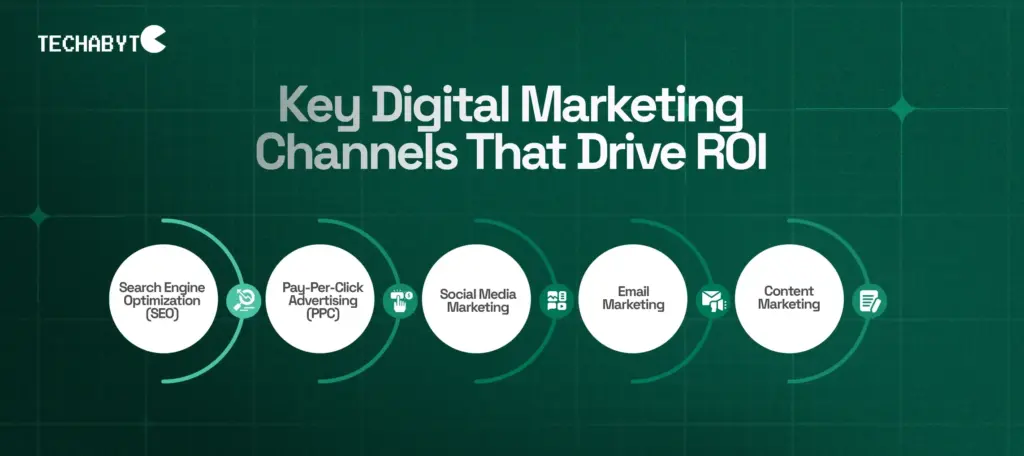
Not all digital marketing channels are equal when it comes to ROI. Let’s explore the top performers.
Search Engine Optimization (SEO)
SEO is a long-term investment with steady returns. When a business gets organic traffic because of a higher ranking, there is no continuous payment for ads. Compared to paid advertising, SEO is more affordable; it’s cost-effective and sustainable.
Long-tail keywords, optimized content, and authority-building are the secrets to how SEO improves ROI in digital marketing. Gradually, SEO builds credibility besides just driving traffic-this makes it one of the strongest ROI channels.
Pay-Per-Click Advertising (PPC)
PPC does not work like SEO. It gives immediate results. For example, on Google Ads and Meta Ads, businesses pay to play at the top and front. The ROI here is highly measurable because clicks, conversions, and costs are all tracked.
PPC advertising does impact ROI in the short term. Therefore, it is best for promotions, product launches, or when a business belongs to a competitive industry. However, one has to manage the budget properly so as not to overspend.
Social Media Marketing
Social media is growing up to become not just a brand awareness channel but a full-on sales powerhouse. With Instagram, TikTok, LinkedIn, and Facebook, companies can get in front of exactly who they want with organic efforts or by spending some cash.
The challenge lies in measuring ROI in social media marketing as it’s all about engagement, and engagement does not necessarily convert into sales. However, throw the right content strategy, ad targeting, and community building at it, and watch the magic happen. Social Media delivers high ROI – especially in 2025, where short-form video dominates.
Email Marketing
Email beats a lot of channels when it comes to ROI. It is cheap, personal, and scalable. Businesses get measurable returns from automated email sequences like welcome emails, abandoned cart reminders, and personalized offers.
Does email marketing generate positive ROI? Yes. In fact, some studies say it gives the highest ratio of returns on investment and mostly more than $36 for every $1 spent.
Content Marketing
Content is the pillar of digital strategy; blogs, videos, infographics, and case studies work to build trust while bringing long-term traffic. Unlike ads that go away as soon as the budget dries up, content keeps generating leads for years.
The role of content marketing cannot ever be overemphasized because it helps put businesses in the minds of consumers as thought leaders while also nurturing their trust and feeding other channels like SEO and social.
How to Measure ROI in Digital Marketing
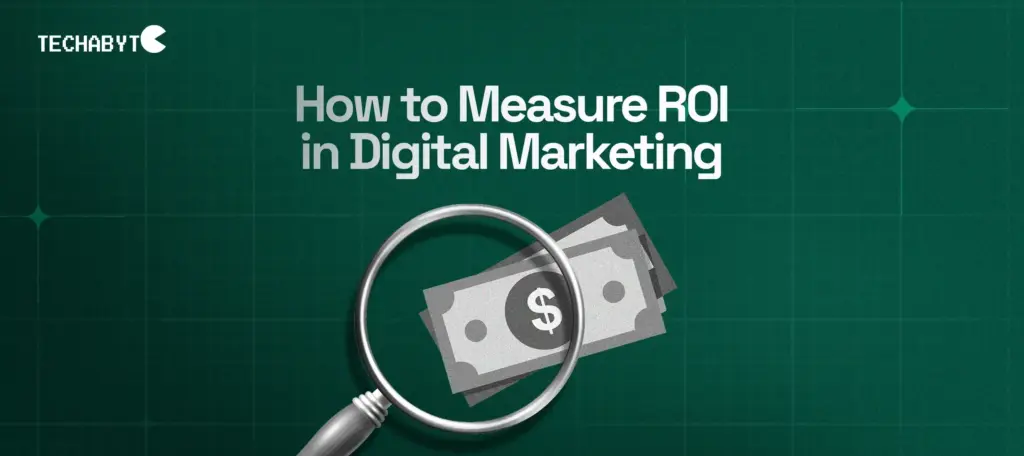
Measuring ROI is not just about tracking revenue; it is about looking at several marketing ROI metrics, such as:
- Click-Through Rate (CTR)
- Cost Per Click (CPC)
- Customer Acquisition Cost (CAC)
- Customer Lifetime Value (CLV)
- Conversion Rate
Digital marketing ROI tools such as Google Analytics, HubSpot, or SEMrush can be used to get insights. Advanced ROI tracking software enables attribution modeling so that a business can realize which channels or campaigns are effectively driving conversions. With metrics combined with the right tracking tools, businesses can go beyond vanity metrics-likes or impressions that create profitability.
Strategies to Maximize ROI in Digital Marketing
To measure ROI is one thing, to maximize it another. Here are a few strategies that have worked:
- Insights data driving appropriate audience targeting
- Investment in landing pages and funnels improved through Conversion Rate Optimization (CRO)
- Personalized and automated interactions for customer experience optimization
- Budget across channels based on performance
- A/B test messaging and design
Constant campaign improvement through customer feedback and analytics delivers the best return on investment in digital marketing. Increased attention to return-on-investment optimization through the customer journey enhances retention, accruing long-term growth.
Common Mistakes That Reduce ROI
While opportunities abound with digital marketing, mistakes can quickly drain budgets. The most common ones include poor targeting or a lack of segmentation, not tracking the right metrics, and overspending on under performing channels. Such are the challenges imposed by returns on digital marketing investment that the emphasis shifts to proper strategizing and execution. Hence, avoiding these mistakes reduces ROI, making sure businesses get the most out of every dollar spent.
Future of ROI in Digital Marketing (2025 & Beyond)
In the future, ROI is defined by AI, automation, and predictive analytics. Tools powered by these technologies enable companies to have a preview of campaign results before implementation.
AI-powered ROI measurement tools redefine targeting as well as personalization and reporting. For this reason, Customer Data Platforms (CDPs) are slowly taking over to merge information from various channels for an inclusive performance view.
The future of digital marketing ROI is going to be real-time optimization, where businesses use predictive models and make smarter decisions on the go. From 2025 and beyond, AI would sit right at the heart of ensuring maximum returns from marketing efforts.
Conclusion
In summary, knowing how digital marketing drives ROI is a must for businesses that want to grow in 2025. From SEO to content, every channel plays a different role in the contribution, but the winning formula lies in measuring, optimizing, and changing what does not work.
Track the right metrics. Avoid mistakes. Embrace AI-driven strategies. That is how businesses get higher returns on their digital investments.
Start to optimize your business with a digital marketing agency for better ROI today. Don’t just spend, invest in the right way.
FAQ:
1. What is digital marketing ROI, and why is it important?
Digital marketing ROI is the Return on Investment that shows how profitable your marketing effort is. It enables businesses to know if their campaigns have generated more revenue compared to the costs incurred. The knowledge of ROI is very important because it gives companies the ability to allocate budgets properly, by concentrating on strategies that perform well, and also proves the value of marketing to stakeholders.
2. How can digital marketing improve return on investment for businesses?
Digital marketing enhances return on investment via accurate targeting, measurable outcomes, and affordable channels. Through SEO, PPC, email, and social media marketing strategies, firms draw in qualified prospects to the sales pipeline and then turn them into paying customers while monitoring results instantly.
3. What are the key metrics to measure ROI in digital marketing?
Major metrics include conversion rate, customer acquisition cost, customer lifetime value, click-through rate, and cost per click. These will help the business know which campaign returns the highest rates and also where improvement can be made.
4. How does SEO contribute to digital marketing ROI?
Content optimization for attracting organic leads reduces the dependency on paid ads as well as builds the brand’s authority. The better visibility a website has in search engines, the more potential for long-term, low-cost traffic it acquires. All these result in revenue growth that can be sustained over time, thereby improving ROI.
5. What role does content marketing play in driving ROI?
Content marketing is what delivers return on investment by building trust, nurturing your leads, and making your business known as an industry authority. It is high-quality blogs, videos, and case studies that will organically attract traffic and prospects to support other marketing channels with a compounding effect on revenue.
6. How can social media marketing enhance ROI?
Social media marketing increases ROI through reaching extremely well-targeted audiences and engaging them with paid and organic campaigns. Conversion, engagement, and lead generation tracking will show which platforms are working to deliver the returns that are being sought.
7. How does email marketing impact return on investment?
Email marketing has one of the highest returns among digital channels. The personalization and automation of emails that do help lead nurturing, abandoned cart recovery, or repeat purchase drives usually generate substantial revenue at minimal cost.
8. What is the ROI of pay-per-click (PPC) advertising?
Pay-per-click puts your ad before the right audience, hence giving immediate results. Return on investment relies upon how effective the campaign is, relevance to the ad, and management of the budget. A well-optimized PPC campaign can return high returns within a short time.
9. How can influencer marketing affect digital marketing ROI?
Return on investment for influencer marketing comes about through increasing credibility and reach to more people by promoting products through an influencer. When done strategically, it leads to brand awareness and engagement as well as conversion, most of the time at a lower cost compared to traditional advertising.
10. What is the return on investment for video marketing campaigns?
Video marketing is engaging as it yields high ROI. They share fast and deliver messages with great speed. Use product demos and testimonials in your video campaigns to increase conversion rates, brand awareness, and build trust between your customers and your business.

